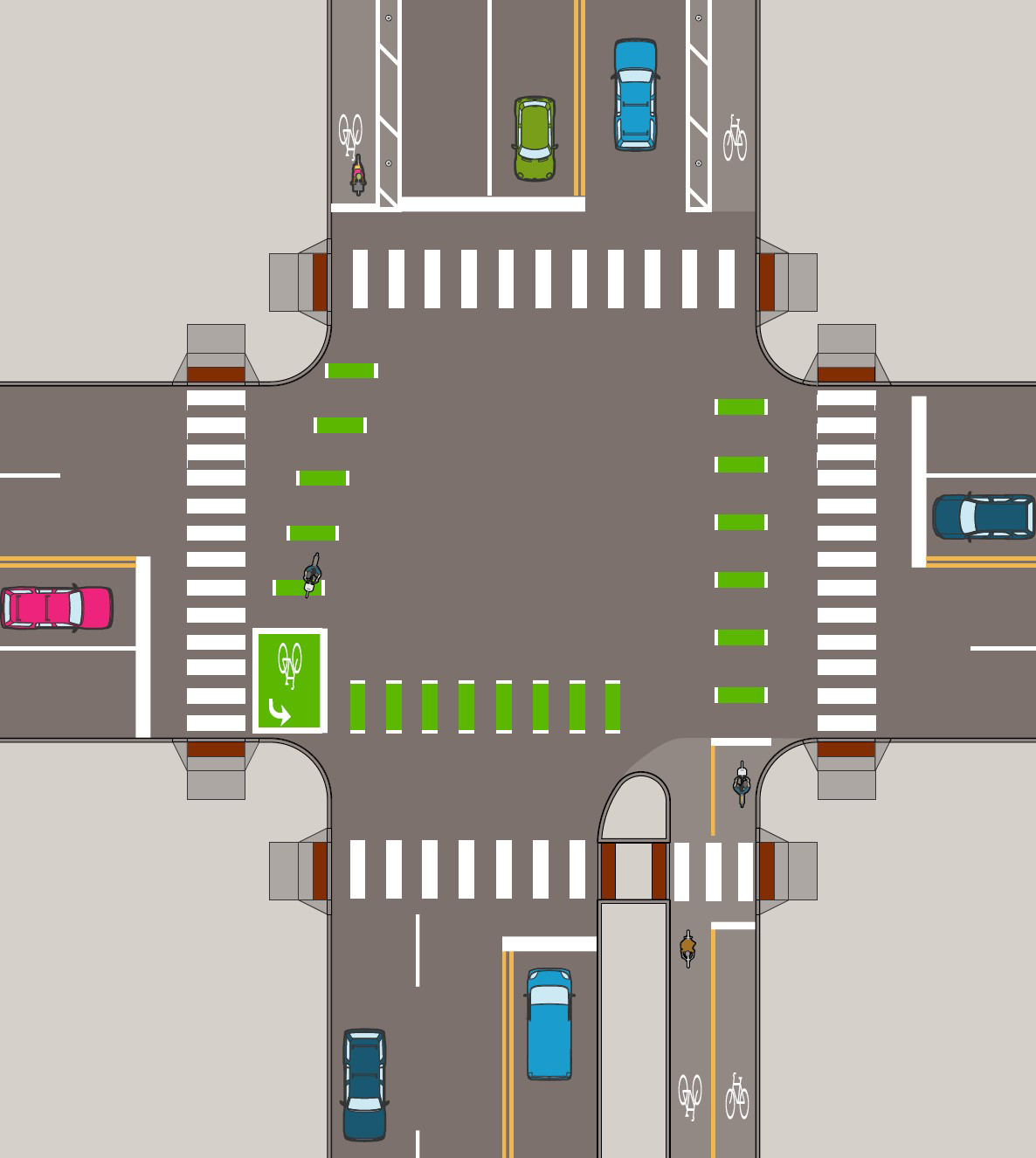Two-way bikeway transitions
Search Content
Download PDF
Print Guide
Introduction
Transitions between one-way and two-way bicycle facilities are a component of some bicycle projects and require careful consideration. Transitions between two-way and one-way bicycle facilities requires people biking contra-flow to traffic to cross the street. Transition design should reflect the unique context of the intersection where it is located and should reinforce a clear travel path across the intersection and clear right of way priority for users.
Figure 3.7E.6:
Two-way bikeway transitions
Design Considerations
|
Striping |
|
|
Location |
Bicycle transitions across the roadway may be located on either side of the adjacent crosswalk. |
|
Signage |
“NO TURN ON RED” (R10-11) signage may be necessary at some or all legs where the bicycle transitions and two-stage turn boxes are located. |
|
Two-stage turn boxes |
Two-stage turn boxes (see figure 3.7E.6) may be employed to assist in transitioning across the roadway, especially at locations with high traffic volumes. |
|
Signal coordination |
At signalized intersections, the bicycle transition should be coordinated with the cross-street signal phase to cross the roadway. |
|
Signal heads and phasing |
Bicycle-specific signal heads and phasing may be installed to assist bicycles transitioning across the roadway. |





